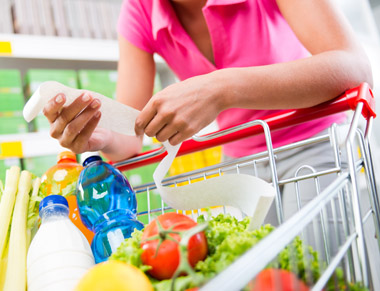
If it seems like you are spending more money every time you go to the grocery store, you are probably right. Food prices are typically on the rise. A little planning with some minor changes can help you eat healthy without breaking your budget.
The most cost efficient use of your money is to reduce the amount of times you go out to eat. Meals out are usually two to three times the cost of preparing them at home.
Purchasing snacks at vending machines or convenience stores is also very costly and you will have a hard time finding healthy snack options. Make your own snack mix and carry a reusable water bottle with you. If you tend to buy soda or coffee at convenience stores or coffee shops, try purchasing these items at the grocery store and brew your coffee at home. It may seem expensive initially to buy these items in larger quantities, but what you buy at the grocery store will cost a fraction of what you will pay for the small and pricey items at the convenience store.
Now that you are considering eating at home more often, there are several ways to save at the grocery store. Plan your menus and shopping list ahead of time and only shop once per week. Additional trips to the store make it too tempting to pick up extras that you want but don’t need. While making your list, check your refrigerator and cabinets for ingredients you already have on hand. Cutting down on trips and using your shopping list will not only help you save money, it will also help you use less gas and save time.
Planning a couple of meatless meals every week can also make a big difference in your food budget. Beans are a great source of protein and it costs only pennies per person to serve them. You can use beans to make a vegetarian chili — most people don’t even miss the meat. Many kids say they don’t like beans, but often they will eat a bean burrito and love it.
Finally, it is important to decrease the amount of food waste in your household. Millions of dollars worth of food are wasted each year. That is not to suggest that you eat everything in sight so you don’t have to throw it away. Rather, it is a suggestion to make plans for all of the food you purchase and follow through with those plans. How many bananas sit on the counter until they turn black and get tossed in the trash? That banana can be mashed and frozen and used for banana bread later. When you prepare a meal and don’t eat all of it, take leftovers for your lunch or plan a night when you finish all of the leftovers from the week. You can also use leftovers as ingredients to create a new meal on the following day.
Food is our third highest household expense after housing and transportation. However, it is possible to decrease that expense with careful planning and shopping. We can’t control food prices, but we can control how we spend our money.